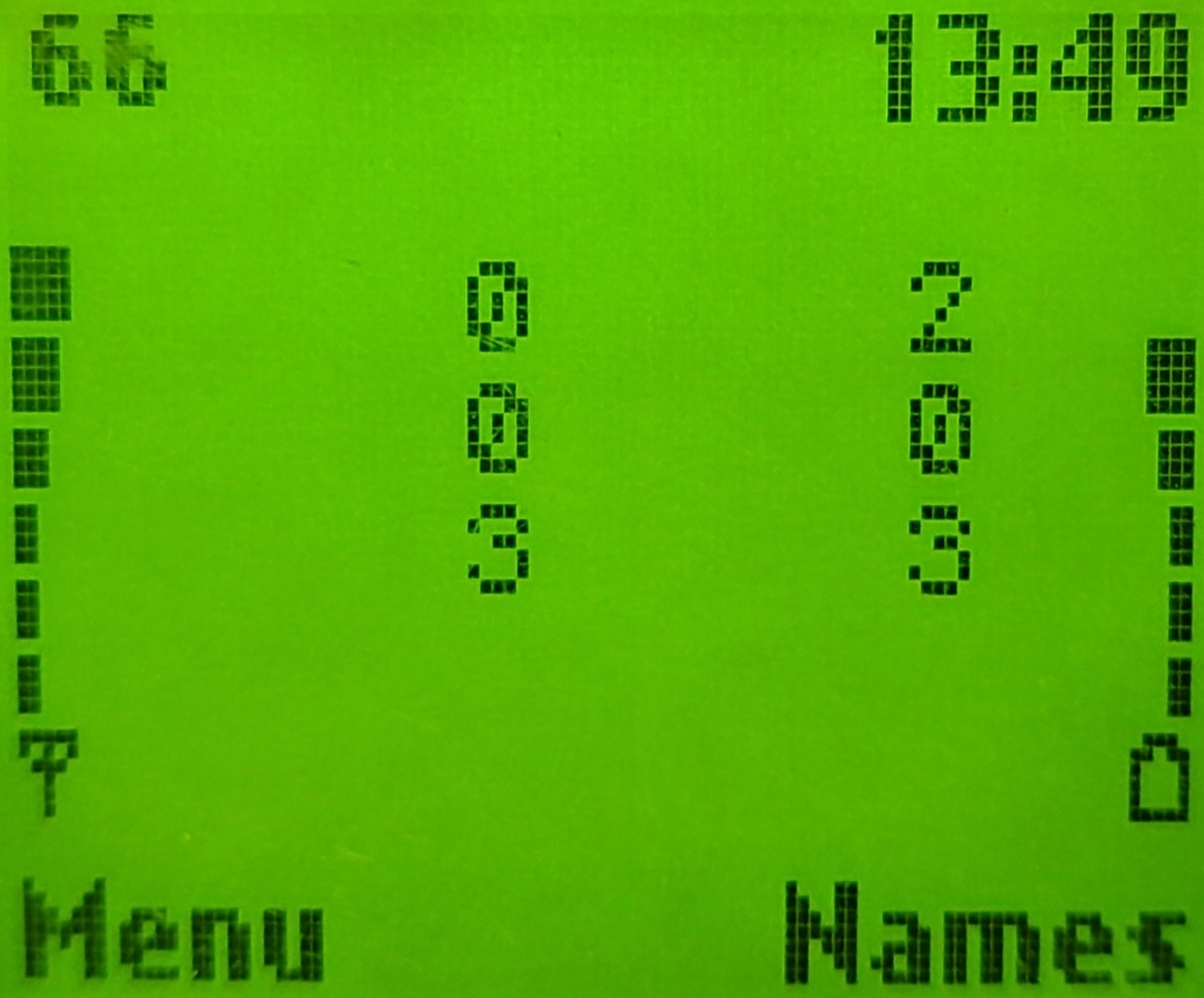Main page
News
Guest book
Home bs0dd.net
Phones
List of modelsFirmware
Net Monitor
FT/NM activationNet Monitor (DCT3)
Net Monitor (DCT4)
Soft and games
Java MIDletsOfficial soft
Soft for 5510
PC software
Connectivity
Data-CablesFLOSYS FBUS/MBUS docs
DLR-3 MBUS (atrox)
Modding
Color display (6310)Soft for DCT3 modding
WAP
WAP-gatewayWAP-page
Other
Nokia 9210 archiveElektronika MK
Kannel for Windows
Nokia Net Monitor description (DCT3)
MAIN PAGE
< PREVIOUS PAGE
NEXT PAGE >
Test 66 – SMS Relay/CM Layer Counters
Available in: 2100, 3330, 5110, 6150, 6210, 7110, 8210, 8250
This test displays information about timers associated with SMS messages at the SM RL (Short Message Relay Layer) and SM CM (Short Message Connection Management) Layer.
| Test screen | Help screen |
 |
 |
 |
 |
TR1: Number of TR1M timer expiries (in decimal). The TR1M timer controls how long the mobile station will wait for an (Relay Layer) acknowledgement (either error or success) from the network after it has submitted the TPDU (packet containing SMS and additional header information). If this timer expires, the Short Message Relay Layer will abort the connection. It is usually rare for this timer to expire, as normally at this layer a error is returned indicating the reason the SMS could not be sent. TR1M timeout can be between 35-45 seconds. [GSM 04.11:6.3.1,10.x]
TR2: Number of TR2M timer expiries (in decimal). The TR2M timer controls how long the mobile station will wait for it’s own upper layers to give it the signal to transmit an (Relay Layer) acknowledgement (either error or success) after receiving a TPDU. Expiry of this timer is also rare as it is a result of the mobile station upper layers taking too long to decode the TPDU. When this timer expires, the connection is aborted. TR2M timeout can be between 12 – 20 seconds. [GSM 04.11:6.3.1,10.x]
TRA: Number of TRAM timer expiries (in decimal). The TRAM timer controls how long the mobile station’s Short Message Relay Layer will wait before reattempting (if allowed) a “memory available for SMS notification” that has been rejected by the network due to TR1M timer expiry or temporary failure. TRAM timeout can be between 25-35 seconds. [GSM 04.11:6.3.3,10.x]
TC1: Number of TC1 timer expiries (in decimal). The TC1 timer controls how long the mobile station’s Short Message Control Layer will wait for an acknowledgement (either error or success) from MSC to allow it do determine if the MSC accepted the message or not. (Note this is different to the acknowledgement associated with the TR1M timer which arrives later - the TC1 acknowledgement is generally associated with the physical radio connection, whereas the TR1M timer is associated with the SMS being accepted at higher layers). If the TC1 timer expires the mobile station can reattempt the data transfer up to 3 times. Generally, this is the timer to expire as radio link failures are more likely than errors in the SM Transport Layer. [GSM 04.11:5.3]
TC2: Number of TC2 timer expiries (in decimal). No information about this timer!
SCH: Number of Cell-broadcast schedule message timeouts (in decimal). Likely to be the number of times the MS has given up listening on the CBCH (Cell- Broadcast Channel) waiting for SMSCB (SMS Cell Broadcast) schedule messages, which describe when the differing types of cell-broadcast message will be broadcast (in order for the MS to avoid having to continually listen and waste power). [GSM 04.12:2.1]
These counters can only be reset with “Test 60 – Reset Counters”. The values are stored in the EEPROM, and are preserved across reboots, SIM card changes, and even software upgrades (provided the EEPROM is not cleared). Note, they are only saved when the phone is properly powered off, hence if the phone crashes or the battery is removed, the totals will not be updated.
SM RL (Relay Layer), SMSC (Control Layer) described in GSM 04.11
Port: 9201
Переключиться на Русский
Powered by COMPPAG 0.54
2022-2024 © Compys S&N Systems